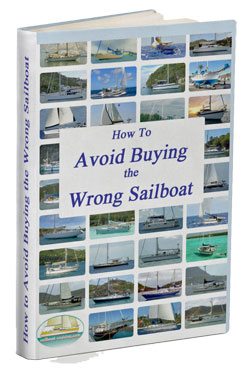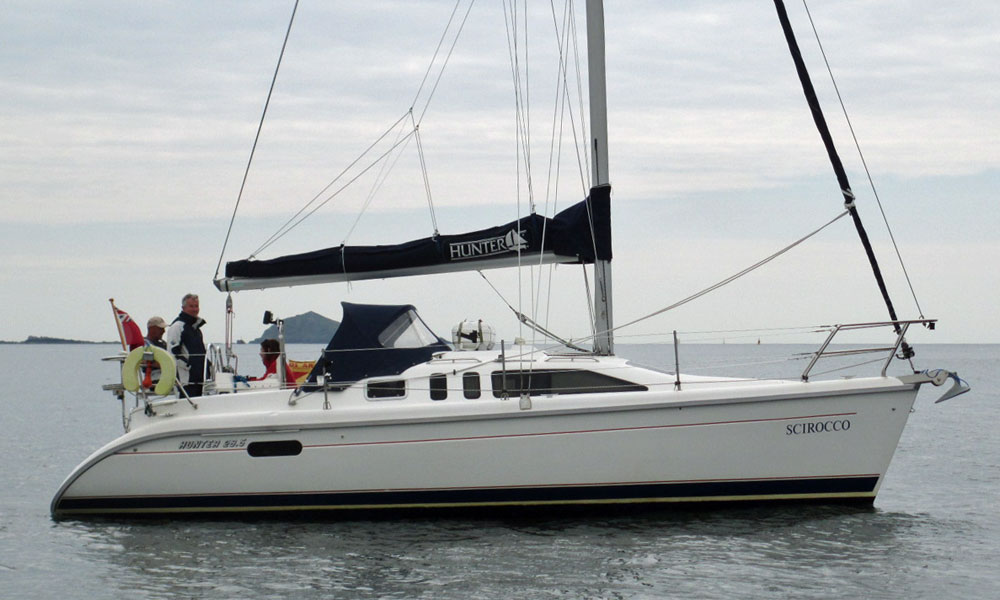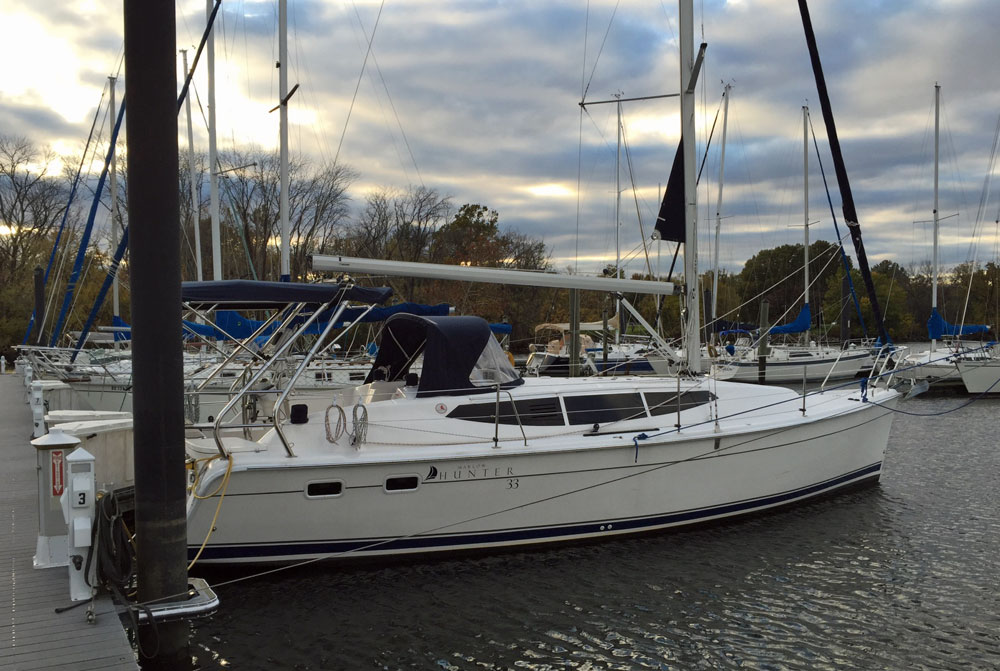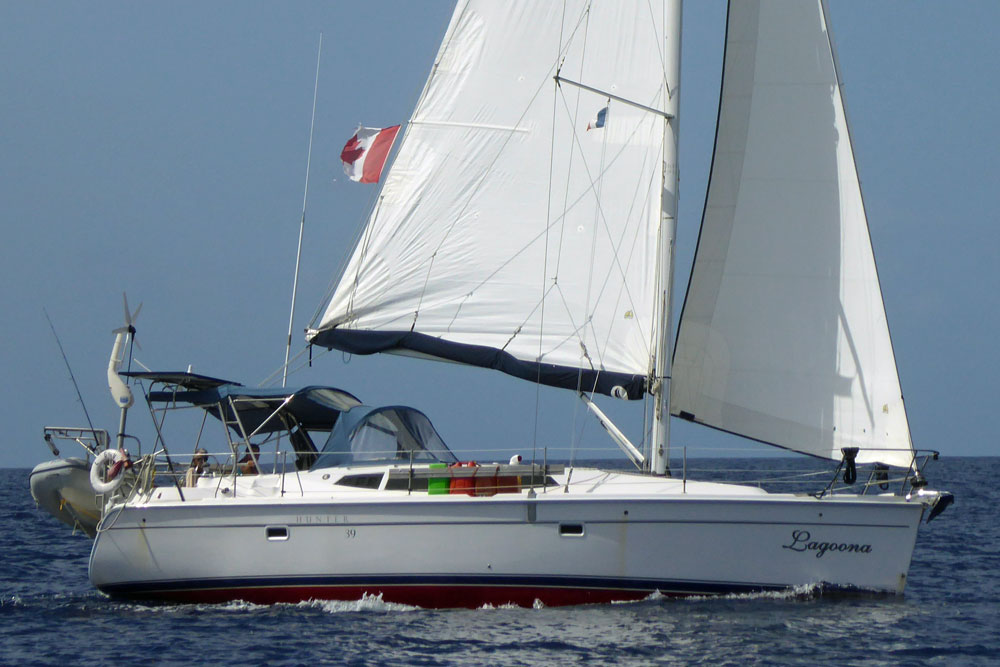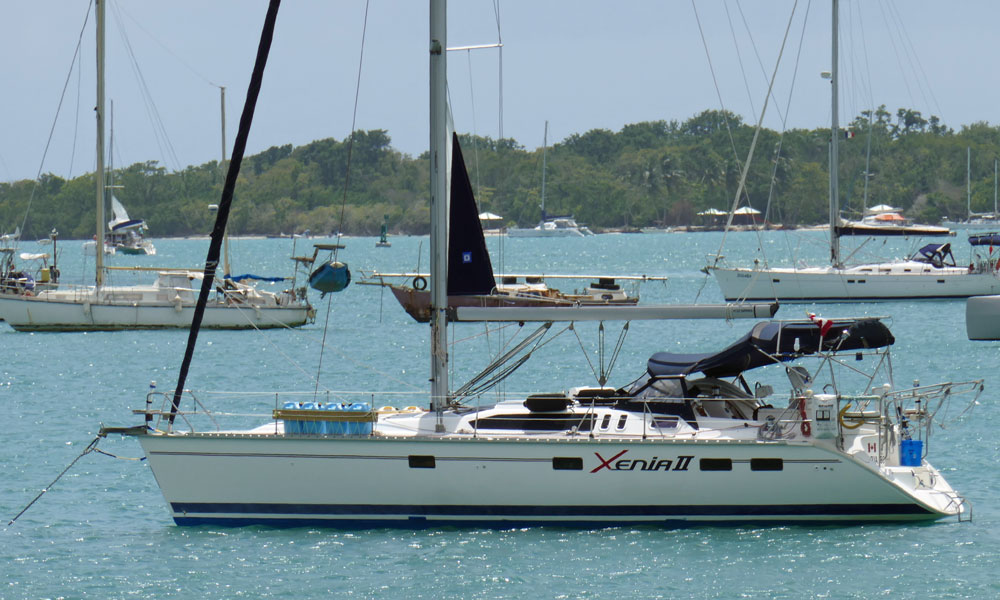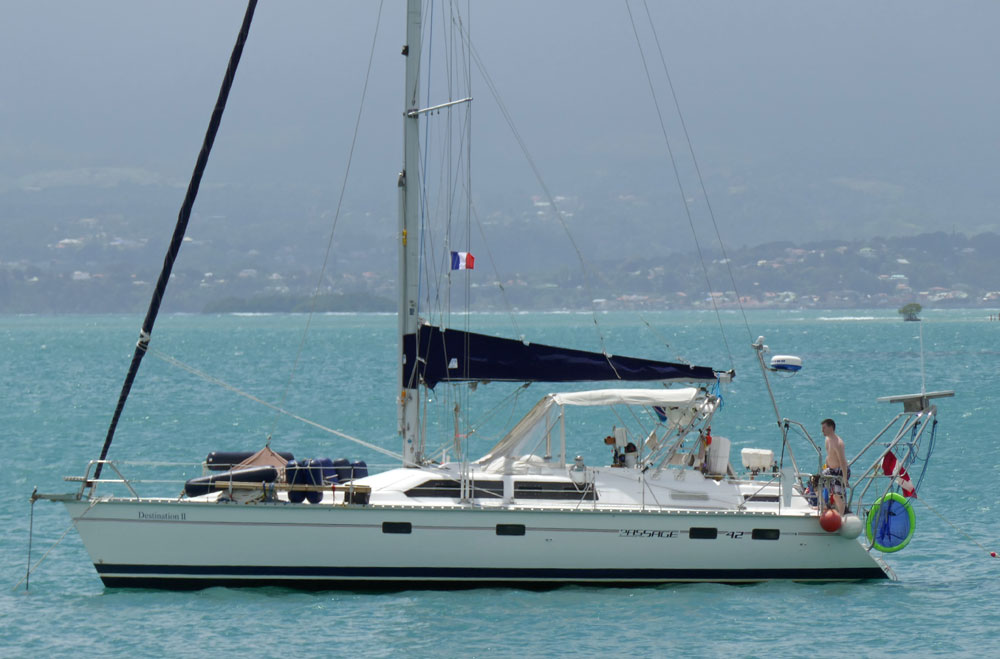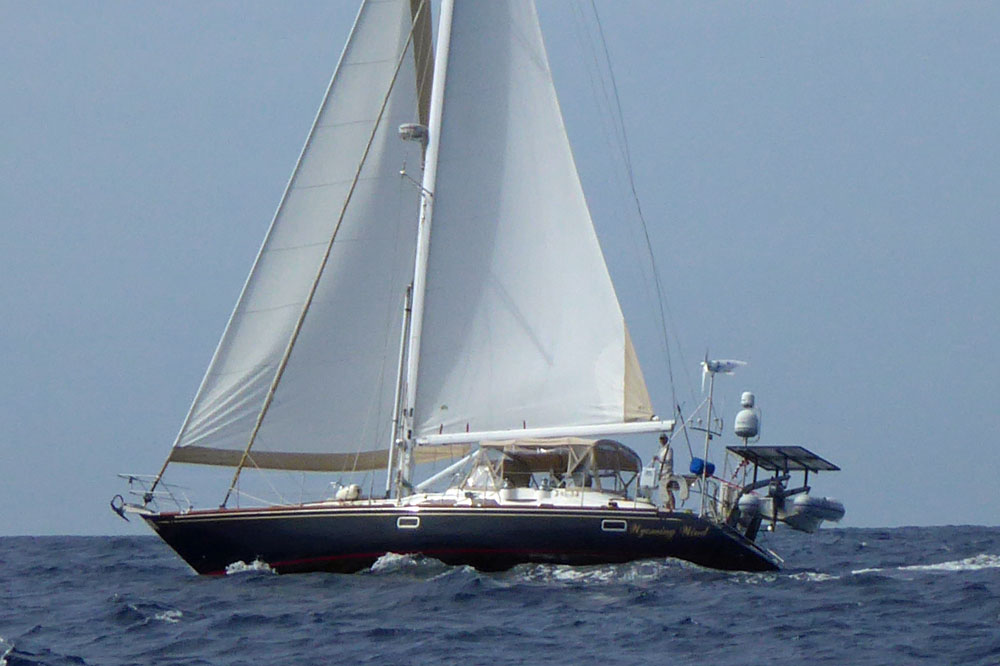- Home
- Cruising Yachts 30' to 35'
- Hunter Channel 323
The Hunter Channel 323 Sailboat
Specs & Key Performance Indicators
The Hunter Channel 323, a bilge-keeled fractional sloop, was designed by David Thomas and built in the UK by Hunter Boats.
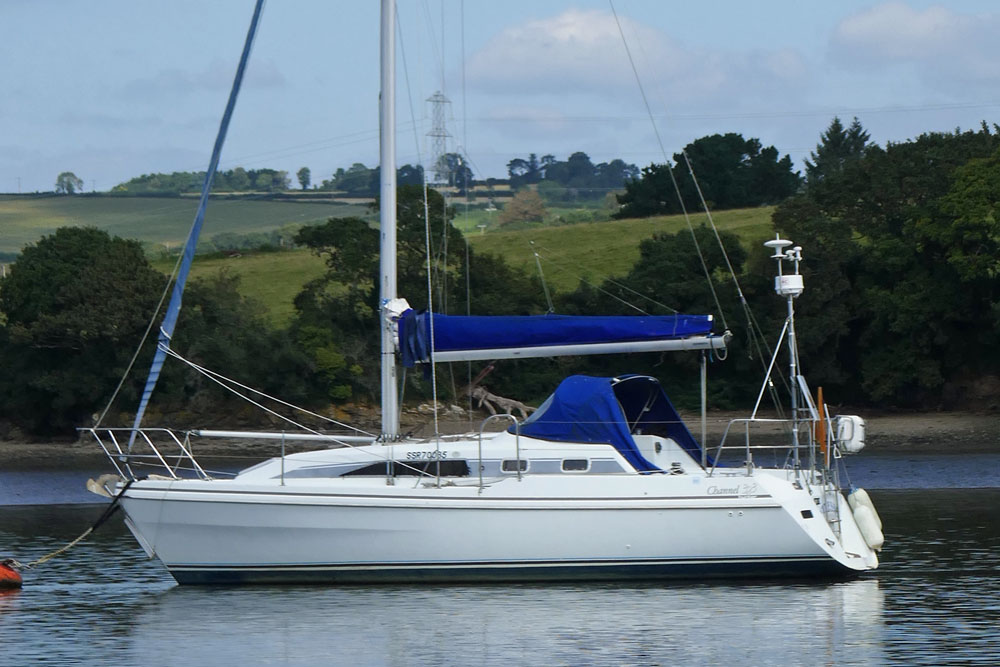 A Hunter Channel 323
A Hunter Channel 323Published Specification for the Hunter Channel 323
Underwater Profile: Twin keels
Hull Material: GRP (Fibreglass)
Length Overall: 32'3" (9.9m)
Waterline Length: 27'3" (8.3m)
Beam: 10'3" (3.1m)
Draft: 4'3" (1.3m)
Rig Type: Fractional sloop
Displacement: 9,370lb (4,250kg)
Designer: David Thomas
Builder: Hunter Boats (UK)
Year First Built: 1991
Year Last Built: 2001
Number Built: 30
Published Design Ratios for the Hunter Channel 323
Sail Area/Displacement Ratio: 15.7
Ballast/Displacement Ratio: 45.0
Displacement/Length Ratio: 207
Comfort Ratio: 22.7
Capsize Screening Formula: 1.9
Read more about these Key Performance Indicators...
Summary Analysis of the Design Ratios for the Hunter Channel 323
1. A Sail Area/Displacement Ratio of just 15.7 suggests that the Hunter Channel 323 is a tad underpowered and will need a stiff breeze to get her going. In light conditions, unless you've got plenty of time on your hands, motor-sailing may be the way to go.
2. A Ballast/Displacement Ratio of 45.0 means that the Hunter Channel 323 will stand up well to her canvas in a blow, helping her to power through the waves.
3. A Displacement/Length Ratio of 207, tells us the Hunter Channel 323 is a moderate displacement cruiser, which means she'll carry all your cruising gear without it having a dramatic effect on her performance. Most of today's sailboats intended for offshore cruising fall into this displacement category.
4. Ted Brewer's Comfort Ratio of 22.7 suggests that crew comfort of a Hunter Channel 323 in a seaway is similar to what you would associate with the motion of a coastal cruiser with moderate stability, which is not encouraging news for anyone prone to seasickness.
5. The Capsize Screening Formula (CSF) of 1.9 indicates that a Hunter Channel 323 would be a safer choice of sailboat for an ocean passage than one with a CSF of more than 2.0.
The Hunter Channel 323: A Versatile and Comfortable Cruiser
Are you looking for a sailboat that can handle a variety of sailing conditions, from coastal cruising to island hopping? Do you want a boat that offers spacious and cozy accommodation, with plenty of headroom and storage space? Do you appreciate a boat that is easy to sail, with a well-balanced rig and a reliable engine? If you answered yes to any of these questions, then you might want to consider the Hunter Channel 323, a 32-foot cruiser designed by David Thomas and built by Hunter Boats Ltd in the UK.
The Hunter Channel 323 is a boat that combines performance, comfort and versatility. It has a twin-keel design that allows it to sail in shallow waters and dry out on the beach. It has a deck-stepped mast with swept-back spreaders and a B&R rig*, which eliminates the need for a backstay and provides more sail area. It has an in-mast reefing system that makes it easy to reduce sail in strong winds. It has a Yanmar 2GM20F diesel engine that delivers 18 horsepower and can reach a maximum speed of 6 knots.
The Hunter Channel 323 also offers a comfortable and spacious interior, with six berths in three separate cabins. It has a large saloon with a U-shaped dinette that converts into a double berth, a forward cabin with a V-berth and storage lockers, and an aft cabin with a double berth and a hanging locker. It has a well-equipped galley with a two-burner stove, an oven, a fridge and a sink. It has a head compartment with a marine toilet, a washbasin and a shower. It has a navigation station with a chart table and an instrument panel. It has plenty of natural light and ventilation from the large windows and hatches.
The Hunter Channel 323 is a boat that can suit different sailing styles and preferences. It is available in two versions: the standard version, which has more headroom and storage space, and the owner's version, which has more living space and comfort. The owner's version also has some optional features, such as a wheel steering system instead of a tiller, an electric windlass for easier anchoring, and a sprayhood for extra protection from the elements.
*The B&R rig is a variant of the Bermuda rig, designed and patented by Swedish aeronautical engineers Lars Bergström and Sven Ridder. It has some distinctive features that make it different from other rigs:
- It has swept spreaders that are usually angled aft, which eliminate the need for a backstay and provide more sail area.
- It has reverse-diagonal shrouds that run diagonally downward from the tip of the spreaders to the attachment of the next pair of spreaders or to the deck, which facilitates a pre-bend of the mast that is sometimes tuned into the rig before it is stepped onto the boat.
- It can be a masthead or fractional rig depending on how the stays are configured. A fractional rig has a forestay that attaches lower than the top of the mast, while a masthead rig has a forestay that attaches at the top of the mast.
The advantages of a B&R rig are:
- It is easy to sail, with a large mainsail and a small jib that can be self-tacking.
- It is stable and stiff, with conventional shrouds that contribute to both lateral and longitudinal stability.
- It is easy to reef, with an in-mast reefing system that enables reducing sail from the cockpit.
- It is reliable and durable, with a mast that does not fall down in normal use.
The disadvantages of a B&R rig are:
- It is restricted downwind, with swept spreaders and shrouds that limit how far the mainsail can be let out.
- It is complex and expensive, with more shrouds and fittings than other rigs.
- It is hard to tune, with a pre-bend that requires careful tensioning of the reverse diagonals and other intermediate shrouds.
The B&R rig is used on many models of Hunter boats. It is a rig that suits different sailing styles and preferences, but it may not be for everyone. Some sailors may prefer a simpler or more traditional rig that offers more flexibility and performance downwind.
This article was written with the assistance of Gemini, a large language model developed by Google. Gemini was used to gather information, summarize research findings, and provide suggestions for the content and structure of the article.
Other sailboats in the Hunter range include:
Recent Articles
-
Is An SSB Marine Radio Installation Worth Having on Your Sailboat?
Apr 14, 25 02:31 PM
SSB marine radio is expensive to buy and install, but remains the bluewater sailors' favourite means of long-range communication, and here's why -
Correct VHF Radio Procedure: Your Questions Answered
Apr 14, 25 08:37 AM
Got a question about correct VHF radio procedure? Odds are you'll find your answer here... -
VHF Marine Radio; Which One is Right for Your Boat?
Apr 14, 25 05:09 AM
If you're looking to buy a VHF Marine Radio the choice can be a bit overwhelming. So what should it be, a fixed VHF or a handheld VHF? Maybe one with AIS or GPS built in perhaps?
